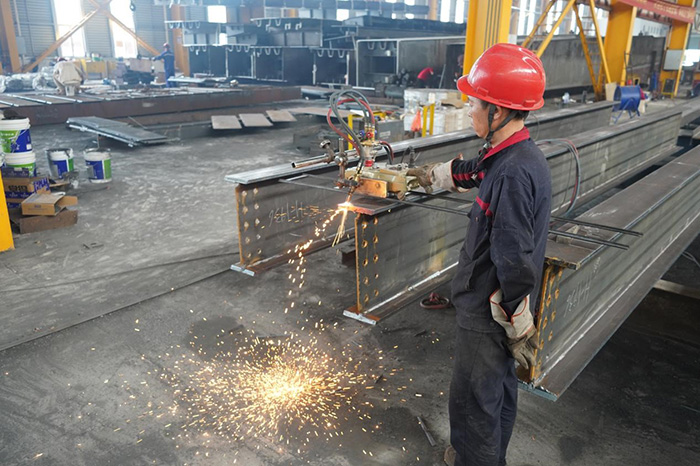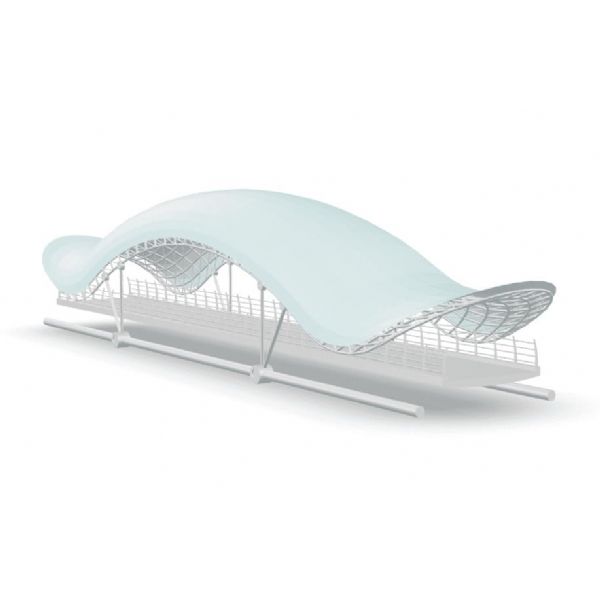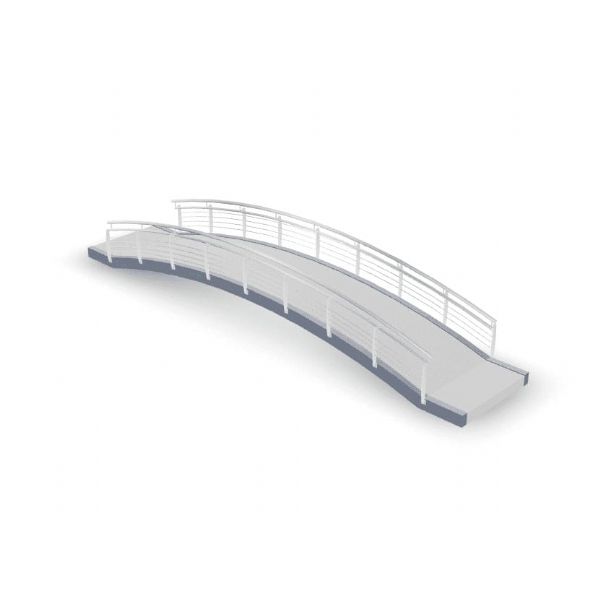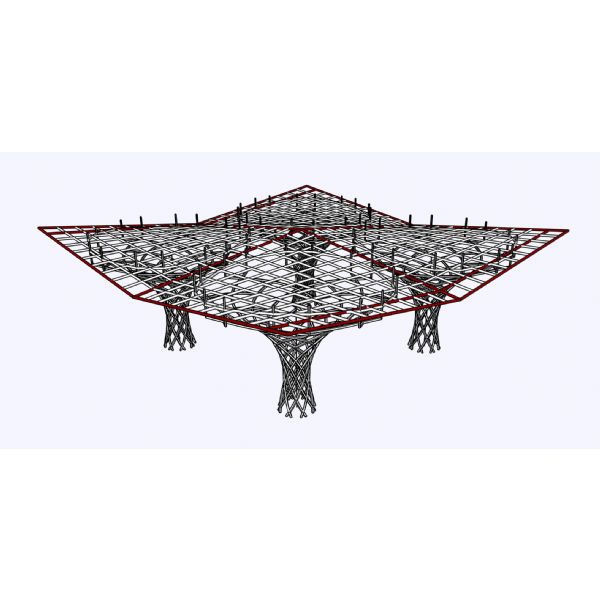With advancements in metal material processing and construction technology, steel structures have become the mainstream choice in modern bridge engineering. Their high strength, ductility, construction efficiency, and adaptability to standardized and automated production make them indispensable. In Steel Bridge Fabrication, welding technology plays a vital role, serving as the primary method for connecting components and shaping critical parts such as beams, nodes, and box sections.
However, the local high temperatures during welding and the subsequent non-uniform cooling process can easily induce welding residual stresses within the components, leading to a series of hidden dangers such as structural deformation, cracking, and shortened fatigue life, seriously affecting the service safety and durability of the bridge. To this end, this article will systematically explore the prevention and control technologies for welding residual stress in steel structure bridges from three aspects: structural design, manufacturing process, and post-weld treatment. At the same time, it will also introduce specific measures and applicable scenarios for stress relief through methods such as heat treatment, mechanical vibration, and hammering when residual stress has already formed.
For more information on the definition of welding stress and its manifestation in production, it is recommended to read the previous blog post: Analysis of Welding Stress and Deformation Problems in Steel Structure Bridges.
Preventing and Controlling Welding Stress on Steel Bridge Fabrication
Furthermore, excessively concentrated welds in a component can lead to more uneven weld stress distribution and potentially complex weld stress concentrations. It is worth noting that high weld joint stiffness can induce significant restraint stresses during welding, which increases the likelihood of cracking. Therefore, the obvious solution is to use weld joints with lower stiffness to avoid longitudinal and transverse weld residual stresses.
In steel component welding, a proper pairing and sequence allow maximum free expansion, reducing residual stress. Short welds should precede long ones, and welds with greater shrinkage should be done first to minimize restraint and stress.
When welding I-beams with covers, the butt weld on the cover should be welded first, followed by the fillet welds between the I-beam and the cover. This is because fillet welds shrink less after welding than butt welds. When welding heavily stressed welds, such as large I-beams, the stressed butt weld should be welded first, followed by the unstressed butt weld, and finally the reserved fillet weld. Furthermore, when welding cross-plane welds, significant residual stresses are easily generated at the intersections, placing a greater strain on the welding team leader’s welding sequence.
Before welding, components should be preheated to 150–300°C, especially for brittle metals, or welded using low heat input (cold welding) to reduce temperature differences. During welding, minimizing weld restraint is crucial, as closed welds create high tensile stresses and increase crack risk.
Selection of welding method
According to the above theory, to prevent residual stress in component welding, workers should try to use some high-energy density welding methods during the actual welding process. The welding line energy of these welders is relatively small, and the welding stress generated is also very small:
- Electron beam welding
- Laser welding
- Narrow gap welding
In general manufacturing processes, CO2 gas shielded welding is increasingly used, not only for its high efficiency but also for its ability to minimize weld distortion. When welding thin plate components, pulsed tungsten inert gas arc welding or resistance welding can be used to prevent buckling. If low-energy methods are unavailable, direct water or air cooling can be used to alter the heat field distribution. This approach minimizes weld distortion without compromising welding specifications.
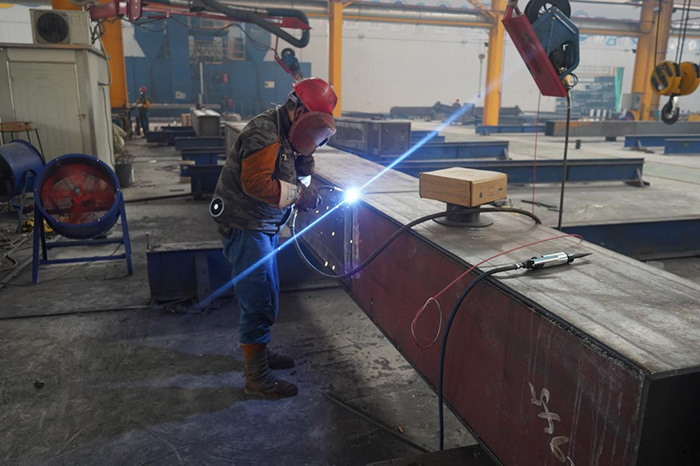
Solutions to eliminate welding stress
As is well known, due to the complexity of welding, significant residual stresses may remain in steel components after welding. Some structures are also prone to developing residual stresses during assembly, which inevitably impacts the performance of the steel components. Whether stress relief treatment is necessary after welding is generally determined based on a comprehensive analysis of the component’s material properties, manufacturing process, and operational history. This article only considers common methods for eliminating and preventing residual stresses.
Heat treatment
It is a common method in metalworking, eliminating residual stresses through bulk, surface, or chemical means. In the early days, thermal effects were used to mitigate deformation and residual stresses before and during welding to address structural deformation caused by welding thin-walled panels. Pre-weld preheating methods for steel components include bulk heating in a furnace, localized far-infrared heating, localized power frequency heating, and flame heating. These methods involve heating the area around the weld seam to a specific temperature through various methods, then maintaining the temperature and allowing for slow, natural cooling.
In 2014, a specialist used linear heating to raise a steel bridge deck weld seam to 625°C for three hours, greatly reducing residual stress. A ceramic heating device applied to a U-rib at 600°C for one hour showed similar results. Further tests by a UK welding lab confirmed that heat treatment significantly reduces weld residual stress and examined its impact on bridge steel properties.
The results showed virtually no change in the material’s elastic modulus, yield strength, and ultimate tensile strength. Using a high-frequency induction heating device to locally heat the weld toe reduces residual stress by nearly 90%. Fatigue test results show a significant improvement in fatigue life at the same stress amplitude.
In summary, post-weld heat treatment (PWHT) is a highly effective, mature, and easily industrialized method for eliminating weld residual stress. It significantly impacts the fatigue performance of critical welds in integral welds of steel bridge structures.
Mechanical hammering
involves mechanically impacting the weld toe to induce plastic deformation, which offsets some of the pressure and plastic deformation, thereby reducing weld residual stress. Its production practices typically include hammering, shot peening, and sand blasting. Numerous studies have been conducted on this method, both domestically and internationally. Research by Borg et al. demonstrated the presence of a compressive residual stress field on the surface of hammered specimens. Furthermore, experimental results by American researchers indicate that the number of loading cycles for crack initiation and crack propagation in hammered test materials is significantly increased. Furthermore, Yamada discovered that hammering cracks creates a compressive residual stress field that not only closes existing cracks but also improves fatigue resistance.
However, due to the complex structure and numerous welds in steel bridge decks, hammering every weld in complex structures is currently difficult to perform in steel bridge deck manufacturing. Long-term practice has shown that this technique not only requires high operator skill and experience but is also sensitive to the shape parameters of the hammer head, making it difficult to adapt to all conditions and steel components.
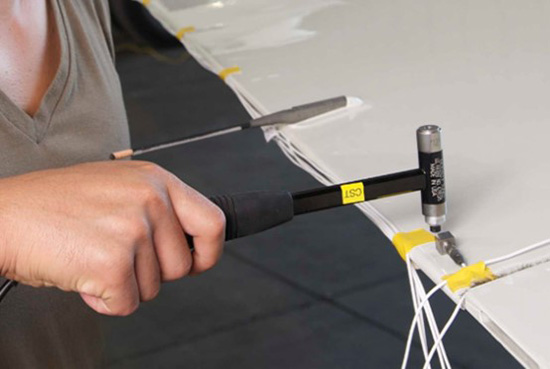
The vibration component method
uses vibration aging to eliminate weld residual stress during steel component manufacturing. Its effectiveness depends on the vibrator, the location of the steel component’s fulcrum, the vibration frequency, and the duration. Therefore, for rigid and complex steel components, multiple vibrations at multiple locations can be used, with the optimal vibration duration being 45 minutes. Furthermore, this method is suitable for vibrating large steel components, offering the advantages of simplicity, flexibility, time efficiency, energy savings, and low cost.
Conclusion
In summary, welding residual stress is a significant structural hazard during the fabrication of steel bridges. Its generation mechanisms are complex, and its manifestations are diverse. This can not only lead to geometric deviations in components and assembly difficulties, but can also directly impact the load-bearing performance and lifespan of steel bridges. Therefore, developing a systematic and efficient welding residual stress control solution, from the design stage to the manufacturing process, and from prevention and control to post-stress relief, is crucial to ensuring the safety and durability of bridge structures.
On the preventative level, optimizing structural design, rationally arranging welding sequences, and selecting appropriate welding methods and preheating processes can minimize the formation and accumulation of welding stress at the source. Regarding stress relief, methods such as post-weld heat treatment, with its mature and effective technology, as well as mechanical hammering, vibration aging, and temperature differential stretching, with their convenient and applicable localized treatment options, all demonstrate significant potential.
In the future, with the diversification of steel bridge structures and the continuous improvement of manufacturing precision requirements, welding residual stress control technologies will continue to evolve towards more efficient, intelligent, and controllable approaches. In short, as a world-class one-stop prefabricated building expert, driven by our professional theoretical research and engineering practice, the welding quality control system of XTD Steel Structure’s unique bridges will continue to provide customers with comprehensive services!

